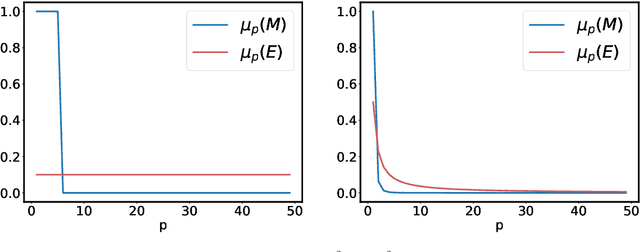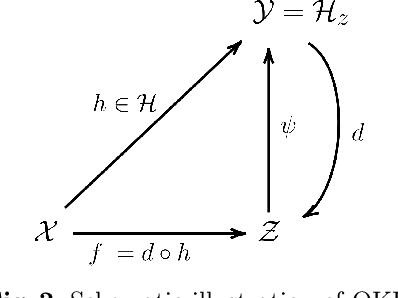Céline Brouard
Vector-Valued Least-Squares Regression under Output Regularity Assumptions
Nov 16, 2022



Abstract:We propose and analyse a reduced-rank method for solving least-squares regression problems with infinite dimensional output. We derive learning bounds for our method, and study under which setting statistical performance is improved in comparison to full-rank method. Our analysis extends the interest of reduced-rank regression beyond the standard low-rank setting to more general output regularity assumptions. We illustrate our theoretical insights on synthetic least-squares problems. Then, we propose a surrogate structured prediction method derived from this reduced-rank method. We assess its benefits on three different problems: image reconstruction, multi-label classification, and metabolite identification.
Learning to Predict Graphs with Fused Gromov-Wasserstein Barycenters
Feb 16, 2022



Abstract:This paper introduces a novel and generic framework to solve the flagship task of supervised labeled graph prediction by leveraging Optimal Transport tools. We formulate the problem as regression with the Fused Gromov-Wasserstein (FGW) loss and propose a predictive model relying on a FGW barycenter whose weights depend on inputs. First we introduce a non-parametric estimator based on kernel ridge regression for which theoretical results such as consistency and excess risk bound are proved. Next we propose an interpretable parametric model where the barycenter weights are modeled with a neural network and the graphs on which the FGW barycenter is calculated are additionally learned. Numerical experiments show the strength of the method and its ability to interpolate in the labeled graph space on simulated data and on a difficult metabolic identification problem where it can reach very good performance with very little engineering.
Learning Output Embeddings in Structured Prediction
Jul 30, 2020



Abstract:A powerful and flexible approach to structured prediction consists in embedding the structured objects to be predicted into a feature space of possibly infinite dimension, and then, solving a regression problem in this output space. A prediction in the original space is computed by solving a pre-image problem. In such an approach, the embedding, linked to the target loss, is defined prior to the learning phase. In this work, we propose to jointly learn an approximation of the output embedding and the regression function into the new feature space. Output Embedding Learning (OEL) allows to leverage a priori information on the outputs and also unexploited unsupervised output data, which are both often available in structured prediction problems. We give a general learning method that we theoretically study in the linear case, proving consistency and excess-risk bound. OEL is tested on various structured prediction problems, showing its versatility and reveals to be especially useful when the training dataset is small compared to the complexity of the task.
 Add to Chrome
Add to Chrome Add to Firefox
Add to Firefox Add to Edge
Add to Edge